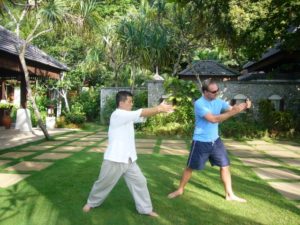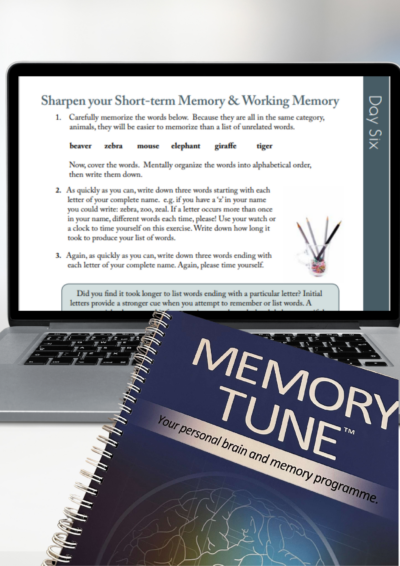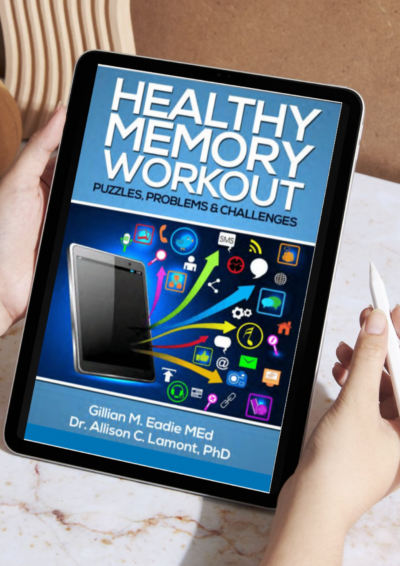Maintaining proper balance requires attention, strength, and flexibility.
Published: January, 2020 from Harvard Health

One skill that can sharply decline with age, and often with little warning, is your sense of balance.
“As people age, changes in flexibility, muscle strength and power, body sensation, reflexes, and even mental function all contribute to declining balance,” says Dr. Brad Manor, associate director of the Mobility and Falls Translational Research Center with Harvard-affiliated Hebrew SeniorLife. “You need to work on all these factors to maintain a strong sense of balance.”
Your sense of balance is what enables you to maintain your center of mass when you stand, walk, jump, run, bend, twist, or make any other type of active movement. We take our ability to balance for granted, but it actually involves a complex system.
Whenever you move, your eyes and brain process information about your surroundings. Your feet detect changes in the terrain. Your arms swing to keep you stable, and your lower-body muscles and joints generate rapid power so you can move forward, stop, and change directions.
Unfortunately, this system works less effectively over time. The sensation of our bodies moving through space is not as crisp, and information travels more slowly between the body and brain. Muscles become weaker, and joints lose flexibility.
System breakdown
“Our sense of balance also is dependent on attention to detail and short-term memory,” says Dr. Manor. “This helps block distractions, so you can make quick decisions, like when to move faster or slower or how to navigate across a busy street or uneven pavement.”
Any breakdown in your balance system increases your risk of falls, which can cause hip fractures, broken bones, and head injuries. In fact, more than one out of four adults ages 65 and older fall each year.
Taking steps
“Doing more balance exercises and activities can keep your sense of balance in good shape, but you also want to focus on multifaceted movements that work on all the elements of your balance system,” says Dr. Manor.
There are many kinds of balance exercises. Science has not tapped any specific ones as the best; however, some have stood out in many balance-related studies.
For example, a 2016 study in the journal Gerontology and Geriatric Medicine found that a specific Balance-Enhancing Exercise Program (BEEP) improved balance skills among adults ages 60 to 80. Study participants did better on both solid and uneven surfaces and increased their walking speed and overall confidence.
The BEEP program focused on three exercises: squats, heel and calf raises, and one-legged standing.
“These types of exercises increase both the physical and cognition skills needed for better balance,” says Dr. Manor. “Plus, they mimic movements of everyday life.”
He recommends adding these to your regular workouts, or even doing them daily on their own. “Balance is definitely a use-it-or-lose-it skill,” says Dr. Manor. “But if you work on your balance continuously, you are almost guaranteed to see improvements.”
Squats. Stand with your feet shoulder-width apart. Bend your knees and imagine you are sitting down on a stool. Lower down until your thighs are parallel to the ground, or as far as is comfortable.
Keep your weight on your heels. Extend your arms forward or place your hands on a chair, counter, or table for stability. Pause for a second or two, then rise back to the starting position. Do this up to 10 times.
Heel and calf raises. Stand with your arms crossed over your chest and raise your heels so you rise up on your toes. Hold this position for up to 10 seconds, or as long as possible, and then lower your heels. Do this five to 10 times. If you need support, hold on to a door frame, a table, or another sturdy object. You also can place your hands flat on a wall.
One-legged standing. Stand tall and place your hands on your hips or hold on to a table or chair for stability. Then raise one leg so your foot is about six to 12 inches above the floor. Keep your gaze straight ahead. Hold for 20 to 30 seconds. Repeat on the other leg. Switch back and forth three to five times.
Hop to it. Older adults often fall when they stumble and cannot quickly regain their balance. “This is usually because of slower reaction time,” says Dr. Brad Manor, with Harvard-affiliated Hebrew SeniorLife. You can improve this skill with bunny hops. Place a strip of tape on the floor and jump back and forth over it up to 10 times. For a challenge, make a cross with the tape and jump from corner to corner
Get moving with tai chi
|
Dual Tasking
You also can perform these exercises with your eyes closed to work on coordination and concentration.
Another option is to “distract” yourself by doing unrelated cognitive tasks; for example, count backward, name words that begin with the same letter, or make a mental grocery list.
“This kind of dual-task training can strengthen the connection between your brain and your body, so you think and move at the same time,” says Dr. Manor. “This can help prevent distractions and mental lapses that may contribute to a fall.”
Do you have a favourite balancing exercise, tip or story to share? Do tell us!






in need of balance exercises
Do try the ones in the article – stay near a firm surface like a bench or chair back if you are just getting started. Every try will help you improve.
Jumping across a taped line on the floor was surprisingly difficult. However, I’ll leave the tape there and try and do 10 jumps each day. Hopefully it’ll get easier day by day!
When I do my walk I do what I call my “tightrope exercise”. That is, I walk on the white strip on the side of the road for a time. It gets better and better with practise.
And now I can incorporate Alison’s great tip and jump over the white road marking as well! Thanks for that.
Of course I am doing my walk on a country road that is not busy. Using my eyes and ears as well!!
Just me again. Just thought. Isn’t it interesting. Watching children jumping, bouncing, skipping, running, colouring in and doing all manner of things. All completely new to them and crossing unknown boundaries every day honing their brain skills. No wonder they require lots of sleep and a good routine.
So I guess children are learning to gain new skills, whereas Senior people are learning to retain their skills .
Reminds me of the poem “ All the World’s a stage” by William Shakespeare. … just a thought
I love your ‘tightrope’ exercise, Mary (an inebriation test, too??) And also the Shakespearean reference. I have loved seeing families out walking without traffic noise drowning out the birdsong.